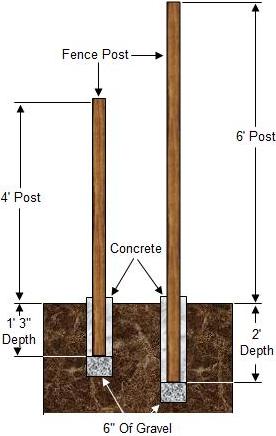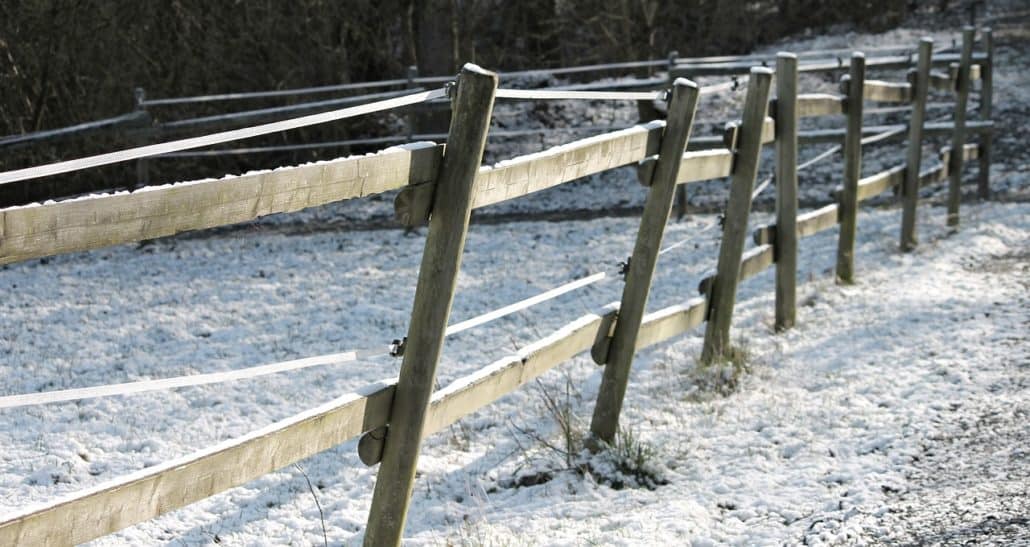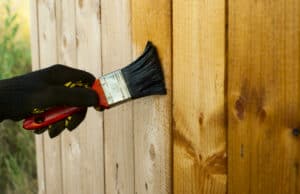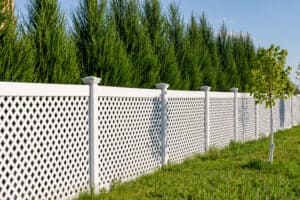Losing your footing can be embarrassing. This is probably something most of us have experienced during the long, icy winters here in the Fargo-Moorhead community. You’re on the way to the car in the morning like usual and suddenly – without any notice whatsoever – your feet slip right out from under you. You wobble and flail momentarily, then play it cool and hope nobody noticed it.
How does embarrassing ice slipping connect to fencing?
Well, just like good footing is essential to staying upright on our feet, solid fence footings are key to keeping your fence upright. In any structure collapse and/or instability is almost certain without good, solid footing.
Fencing is no exception. When you factor in the harsh weather conditions and unforgiving winds common to the Upper Midwest, the need for good fence footing can’t be underestimated.
That’s why Liberty Fence & Deck Co. is here with an important discussion on fence footings to assess the stability of your current fencing or save you from disaster on a future fence installation.
A Good Fence Footing
To be sure, there are some major and important differences between fence footings and human feet. Humans are designed to move, walk run jump, stretch etc. Flexible feet, joints and toes perfectly accommodate that movement.
However, a fence does not need to go anywhere. Just like your feet in the slippery driveway, your fence footings need to serve as anchors, keeping it stabilized and unmovable, no matter what conditions exist.
Sometimes – depending on the type of fence, as well as the type of soil – a proper footing can consist of simple post holes dug in proportion to the height of the fence post. Your vertical fence posts will rest solidly in these holes. The depth of a fence post hole is generally about 1/3 of the post’s above-ground height. For example, a 6 foot (above ground) fence post would need to be buried about 2 feet in the ground.
In other cases where the soil is not a solid enough base or when dealing with certain types of fencing, concrete will need to be added to these post holes to really solidify your vertical post strength and reinforce your entire fence’s structural integrity.

Digging a deep enough hole or even adding concrete is a lot of elbow grease, but it will save you from the bad results of improper fence footings. What does that entail? Read on.
The Results of Improper Fence Footings
All good construction starts from the bottom up. If care is not taken to insure your footings are properly dug to the correct depth and the proper methods are used, the entire project could be a waste of time and money.
Unfortunately, if the foundation of your fence was not properly crafted your fencing may lose its footing when the rough whether inevitably comes. This ugly outcome not only leads to additional repair costs, but also brings along a heap of stress.

If, for example, your fence loses its footing in a fall wind storm right before the ground freezes, you may not be able to hire a fencing contractor to fix the damage until the winter is over and the ground thaws. In the meantime, what will you do with the dog in the back yard? That is one headache you don’t need.
Quality dug fence footings are especially important when crafting a privacy fence. Why? Privacy fences are more prone to problems from wind resistance.
Typically, the less private your fence is the less wind resistance it has. If you can see through wide slats in your fence, that means wind can also freely pass through. If the slats are placed flush against each other, a fence without proper footings can become one big kite during the first storm.
Of course, here at Liberty Fence and Deck Company, even our most private fences are built to take on even some of the harshest Upper Midwest winds. Our craftsmanship can stand up to the conditions. The secret? A quality fence build starting with – you guessed it – strong footings!
What if my Fence Already has Bad Footings?
If it happens to be that your fence has already been installed – whether for a short or long period of time – but your fence has experienced damage in whatever form, don’t stress. Liberty Fence is here to help with any of your fence’s problems, even ones related to bad footings. Our fence repair team has the skills to flip a sagging fence into a sturdy fence.
Liberty Fence Co. can even place stronger footings for your fence to make sure it is properly anchored and prevent future damage from occurring the next time a big gusts whips through the neighborhood.
Get Your Fence Built Right
Avoid DIY Fencing
If you want professional-grade footings, avoiding a DIY fence build or fix is highly recommended. Granted, many people have great motives in building their own fences, and there can be great benefits, if you have the know-how and time.
Still, in order to avoid the headaches that we have personally seen time and again from fence DIY-ers as well as some companies with less experience, we suggest hiring a true pro to do the job right from start to finish.
The Best Build for Your Fence
If you have a fence installation project or repair in mind but don’t know where to start, we hope you do now! Get your fence off on a good foot; contact us here at Liberty Fence & Deck Co. right away to get your ideas underway. We’ll help you make sure your fence is solid from the ground up.





